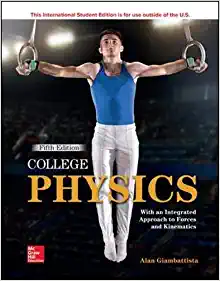An aluminum rod, 1.0 m long, is held lightly in the middle. One end is struck head-on
Question:
An aluminum rod, 1.0 m long, is held lightly in the middle. One end is struck head-on with a rubber mallet so that a longitudinal pulse —a sound wave—travels down the rod. The fundamental frequency of the longitudinal vibration is 2.55 kHz.
(a) Describe the locations of the displacement and pressure nodes and antinodes for the fundamental mode of vibration.
(b) Calculate the speed of sound in aluminum from the information given in the problem.
(c) The vibration of the rod produces a sound wave in air that can be heard. What is the wavelength of the sound wave in the air? Take the speed of sound in air to be 334 m/s.
(d) Do the two ends of the rod vibrate longitudinally in phase or out of phase with each other? That is, at any given instant, do they move in the same direction or in opposite directions?
Step by Step Answer:

College Physics With An Integrated Approach To Forces And Kinematics
ISBN: 978-1260547719
5th Edition
Authors: Alan Giambattista





